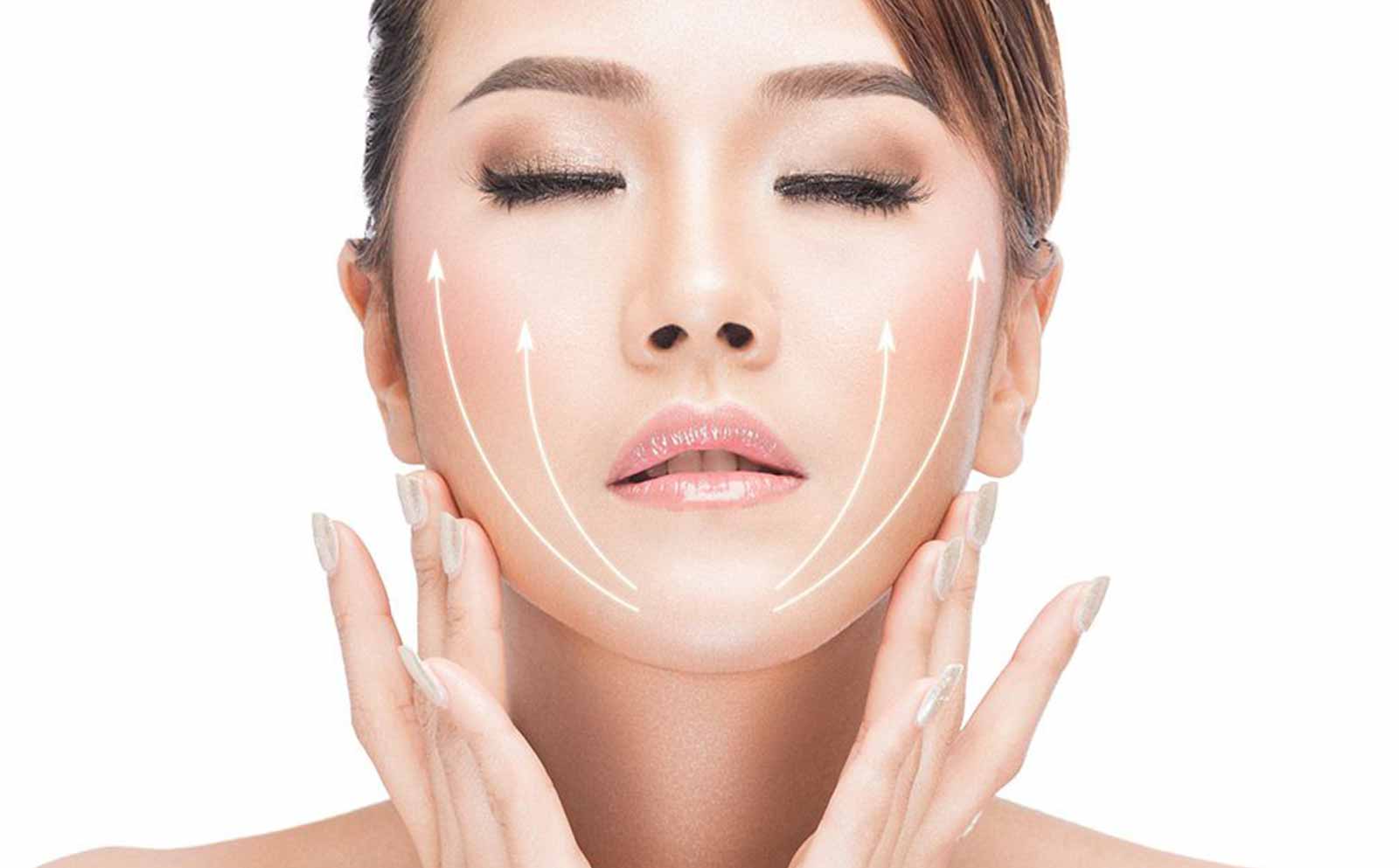Non-surgical Facelift
If you want to improve your appearance, but are unsure about surgery and all the risks that come with it, a non-surgical facelift could be the answer.
Although it sounds like a contradiction in terms, a non-surgical facelift is exactly that, a number of procedures that, when used together, give the face the appearance of having been lifted and rejuvenated. By tightening the deep underlying muscle layer, called SMAS, with Ultherapy, restoring volume lost through age with dermal fillers, relaxing wrinkles with botulinum toxin injections and improving the appearance of the skin with medical needling, chemical peels, or prescription skin care. You can really turn back the hands of time and have the fresh, vibrant face of a younger you.
Non-surgical face-lifts are tailor made for each client. During a personal consultation with Dr Huss she will assess your suitability to achieve a natural result.
Non Surgical Facelift. Before and after.
Duration
Variable
Anaesthesia
Various Options
Downtime
24 – 48 hours. Risk of bruising, swelling, tenderness, lumps, asymmetry
Final result
4 months – 2 years procedure dependant
Suitable for
Patients wanting to improve their appearance. For best results skin should be in good condition and not too furrowed or saggy
FREQUENTLY ASKED QUESTIONS
What areas can be treated?
As all faces are different, non-surgical facelifts are uniquely tailored for the individual to give the greatest benefit.and we offer free consultations to discuss what can be achieved.
How does the treatment work?
By looking at the anatomy and physiology of ageing, we understand that various changes occur in the face. The youthful fat pads that are responsible for our well-defined cheeks start to shrink and descend with gravity, leading to loss of volume in the tear trough region (beneath the eyes) and nose-to-mouth lines (nasolabial folds) appear. The skin becomes thinner and starts to sag, jowls start to appear at the jaw-line and lines develop at the corner of the mouth. Years of making facial expressions starts to have a permanent impact on the skin leading to feathery lines.
Only by understanding the ageing process can these problems be truly addressed. During a personal consultation Dr Huss will be able to best advise you on how to achieve the desired result.
The treatment often combines Botox and dermal fillers which both involve injections into or just below the skin using tiny needles or cannula. Fillers plump up the layers of skin immediately beneath the area and the result is an instant filling-out effect so that the skin is smoother, less wrinkled and more youthful although with Botox it does take a few days to see the results.
The deeper muscle layer underneath, called SMAS, which was previously only reached by surgical facelifts can be tightened with Ultherapy which uses ultrasound energy to create the most complete non-surgical facelift.
Is it safe and does it hurt?
We only use fillers with a proven track record for safety and so you can be assured that they are perfectly safe. Similarly, millions of people worldwide have been treated with Botox and it has an excellent safety profile when in professional hands. Ultherapy has FDA clearance with evidence data to support its safety profile and the areas are scanned prior to delivering precise ultrasound energy.
Treatment is not recommended in pregnant or breast-feeding women or those with active skin infections such as cold sores.
The injections and ultrasound energy usually sting and can be slightly painful but many people experience only mild discomfort. Anaesthetic creams or injections are often used. Our usual practice is to combine the filler material with local anaesthetic so just the area that needs to be treated is numbed and discomfort is kept to an absolute minimum.
Are there any side effects?
Since the products are hypoallergenic gels, allergic reactions are extremely rare. Side effects are uncommon but can occur, and include bruising, tenderness, reddening, and occasionally itching. There is usually a little swelling immediately after treatment but in most cases it is very mild. If any of these do occur they usually settle within a few days. Bruising can sometimes be significant and last more than a week, it is best to avoid anti-inflammatories (aspirin, ibuprofen) for at least 7 days before treatment, unless these have been prescribed for a medical indication. Alcohol within the previous 24 hours can also increase the risk of bruising.
Many people worry about having a ‘frozen’ face after Botox; this is almost always due to poor injection technique. Dr Huss is extremely experienced so you can be assured you do not need to worry about being left with a frozen face!
What can I expect after treatment?
Each treatment session will usually take about 40 minutes to perform and you can carry on with your normal life immediately after treatment. Dermal fillers are broken down slowly by the body and so the results typically last between 6 – 12 months depending on the particular filler used with some fillers lasting considerably longer. Following Botox treatment, wrinkles normally begin to disappear after two or three days, and full results are usually seen within ten days.
On average the effects last three to four months, but with repeated treatments the results may last longer. Ultherapy results typically last for around 18 – 24 months.
After having a non-surgical facelift, the effects can remain by undergoing periodic maintenance treatments.




